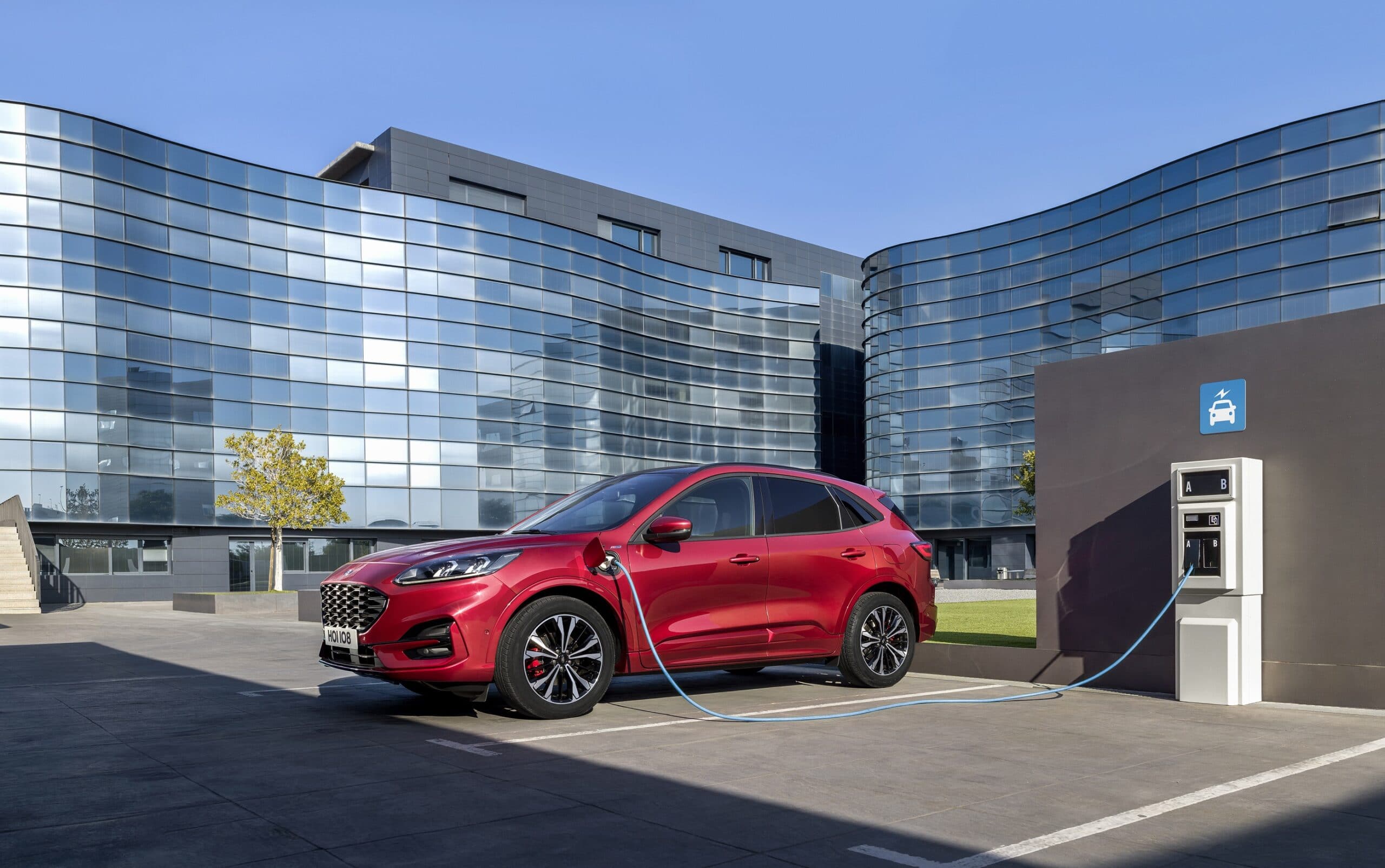
Not only is the Ford Kuga PHEV the best-selling Plug In car in Europe in the first half of 2021, but its owners covered 49% of the total km using the electric mode. This results in a fuel saving of around 800 euros per year.
The data speak for themselves and denote a great success for the Ford Kuga PHEV. The vehicle, in fact, turns out to be the Plug In Hybrid best-selling in Europe in the first half of 2021. Its consumption figures are also satisfactory, as drivers have covered 49% of the distance so far in electric mode, using energy charged to the battery from external sources. Factors that show that users make the most of the 56km range in electric mode.
The sales record for the car was recorded in June, when the brand registered 6,300 units sold. An impressive figure, which exceeds the overall sales figure of all the other versions of the Kuga range. In total Ford has sold nearly 16,000 Kuga Plug-In Hybrids, over a third more than the closest competitor.
Sales of Plug-In Hybrid and electric models are seeing an increase across Europe. Many believe that this market surge is due to a greater understanding of the electric vehicle. Plug-In Hybrid models accounted for 8.4% of new car sales in Europe during the second quarter of 2021, marking an increase of more than 255% over the same period last year.
“We strongly believe that our customers are purchasing hybrid vehicles to benefit from the benefits of electric driving, and these figures show how kuga Plug-In Hybrid customers are keen to use their car in electric mode as much as possible,” he said. Roelant de Waard, General Manager, Passenger Vehicles, Ford of Europe. “Ford’s future is one of electrification and the fact that Kuga is the best-selling PHEV shows that our customers want to join us on this exciting journey.”
Data collected by Ford to understand and optimize the customer driving experience provided the following information:
If we analyze the average prices of gasoline and household electricity and estimate to travel about 15,000 km annually, we can attest that the driver of the Kuga Plug-In Hybrid can achieve annual savings of 800 euros.
The Kuga Plug In is equipped with a split-power structure motorization. This combines a Atkinson 2.5-liter four-cylinder petrol engine with an electric motor and a 14.4 kWh lithium-ion battery. In addition to charging from an external power supply, the Kuga Plug-In Hybrid can recharge while on the move. This happens thanks to the regenerative charging technology, which captures the kinetic energy normally lost during braking.
Earlier this year, Ford announced that by mid-2026, all cars sold in Europe will have at least one Plug-In Hybrid or Full Electric version and that by 2030 they will all be electric. Earlier this month, the new Ford Mustang Mach-E GT electric SUV went on sale, while more than 5,300 Mustang Mach-Es were delivered to customers in Europe during the second quarter of 2021.
The range of electrified cars of the Blue Oval also includes the mild hybrid and full hybrid versions of Kuga, the full hybrid models of Mondeo, S MAX and Galaxy; the Explorer Plug-In Hybrid and the mild hybrid versions of Puma, Fiesta and Focus EcoBoost.
If you are looking for link 2000 of free monopoly go, you have landed on…
In today's world there are so many ways to eat, so many diets to follow…
Let's discover Agrati together, the company whose mission is precision, albeit in the context of…
In this review we will analyze Dragon's Dogma 2: the highly anticipated sequel to Capcom's…
Honor 200 Lite arrives, let's discover the features, price and technical data sheet of Honor's…
F1 is considering changing the race scoring system for drivers with a view to 2025At…